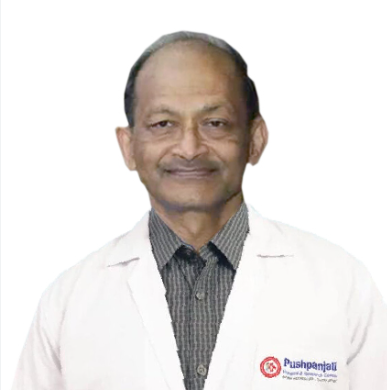Male Sexual Dysfunction

Quick Summary
- Male sexual dysfunction is a general term used for various abnormal conditions related to sexual activity and sexual behaviour in males
- Some of the common male sexual disorders include erectile dysfunction, premature ejaculation, inhibited or delayed ejaculation, retrograde ejaculation, male orgasmic disorder, penile curvature and priapism
- Certain medications may also cause sexual problems, such as clomipramine, desipramine, chlordiazepoxide, and beta-blockers (antihypertensive drugs)
Male sexual dysfunction is a general term used for various abnormal conditions related to sexual activity and sexual behaviour in males. It has been estimated that almost 52% of the patients between 40-70 years suffer from different degrees of sexual dysfunction. Further, almost 15% of couples worldwide face sexual disharmony, and 40-50% of the cases are attributed to malefactors. Some of the common male sexual disorders include erectile dysfunction, premature ejaculation, inhibited or delayed ejaculation, retrograde ejaculation, male orgasmic disorder, penile curvature and priapism. Certain medications may also cause sexual problems, such as clomipramine, desipramine, chlordiazepoxide, and beta-blockers (antihypertensive drugs).
What are the Various Types of Male Sexual Dysfunctions?
Erectile dysfunction (ED)
ED is a condition in which the patient cannot have or maintain an erection during sexual intercourse.
- Symptoms: Patients with this condition cannot achieve an erection. In some cases, the patient may achieve erection but not be able to maintain it during sexual intercourse. Patients may also have reduced sexual desire.
- Causes: There are psychological and physical causes of ED. The psychological causes include anxiety, depression, stress, and problems in relationships. The physical issues include high blood pressure and cholesterol, diabetes, heart disease, obesity, multiple sclerosis, Parkinson’s disease, and sleep disorders.
- Diagnosis: The doctor diagnoses ED through physical examination and medical history of the patient. If the doctor suspects that ED is due to an underlying medical condition, the doctor may also advise the patients to undergo certain tests, such as blood tests, urine tests, imaging tests, and psychological examinations.
- Treatment: Oral medications are the common treatment for ED. These include PDE5 inhibitors (sildenafil and tadalafil), alprostadil and testosterone. The doctor may also advise the patients to use penile pumps if the medications are ineffective. Some patients require surgical interventions, such as penile implants.
- Prevention: The patients must manage chronic conditions, such as diabetes, hypertension, and high cholesterol. They should stop smoking and limit alcohol consumption. It is important to perform regular exercise.
Premature Ejaculation (PE)
It is a condition in which the male ejaculates sooner than is anticipated by him or his partner during sexual intercourse.
- Symptoms: Patients with PE cannot delay ejaculation for more than 60 seconds of penetration. The problem may not only occur in sexual intercourse but also in other sexual activities, such as masturbation.
- Causes: The causes of PE are both psychological and biological. The psychological causes include guilt, depression, anxiety, lack of confidence, stress, and performance anxiety. ED may also lead to PE. The biological factors include abnormal hormonal levels, abnormal neurotransmitter levels, penis sensitivity to stimulation, and infection and inflammation of the urethra or prostate.
- Diagnosis: The doctor makes the diagnosis of PE based on the health history, sexual experiences, and physical examination. If the patients are experiencing both PE and ED, the doctor may recommend the tests to determine the level of testosterone. If the doctor suspects that PE is due to psychological issues, he may refer the patient to a psychological counsellor.
- Treatment: There are several methods for the management of PE. The doctor may prescribe oral medications, like antidepressants and phosphodiesterase inhibitors. Topical anaesthetics are also useful in some patients. Behavioural techniques, pelvic floor exercises, and condoms are also effective ways to manage PE.
- Prevention: There are several ways to prevent PE. Identifying and treating the underlying condition helps in preventing PE. Further, relaxation techniques and behavioural therapy, along with psychological counselling, assist in managing the psychological issues that lead to preventing or reducing the frequency of PE.
Penile curvature
It is a condition characterised by the significant bending of the penis during erection and may cause difficulty or pain during sexual intercourse.
- Symptoms: The patients with penile curvature have a significant bent during erection. Patients with this condition may have painful erections. The patients may have difficulty in performing sexual intercourse and may have ED. Patients may also experience stress and anxiety, which may also lead to penile shortening in some cases.
- Causes: There are various causes of penile curvature. Some patients have congenital penile curvature, which means there is a curvature from birth. In other cases, penile curvature results from Peyronie's disease. There is fibrous tissue on the penis in this condition, causing curvature. Risk factors for Peyronie's disease include connective tissue disorder and age.
- Diagnosis: The doctor may diagnose the penile curvature through physical examination and medical history. The doctor may examine the penis in the erect position through vasoactive drugs. In the case of Peyronie's disease, the doctor may also advise the patient to undergo an ultrasound of the penis.
- Treatment: There are various treatment options for penile curvature. The doctor may monitor the condition in the mild form of the disease. Then, the doctor may advise medications, therapy, and surgery in moderate and severe forms. The medications include verapamil, collagenase, and interferon. The patients may also undergo traction therapy to stretch the penis through a mechanical device. The surgical interventions include sutures, penile implants and grafting.
There is no method to completely prevent the disease. However, certain measures help in reducing the risk of penile curvature. It includes managing an underlying medical condition and getting treatment when the condition is in a mild form.
Priapism
In this condition, the patient has a complete or partial erection for a prolonged (persistent) period without any sexual stimulation, which may cause pain.
- Symptoms: Patients with this condition experience painful erections, and the erections last for over four hours. The erection may be without any stimulation. It is an uncommon condition, and males in their 30s are mostly affected. Erection for over hours requires emergency medical interventions. There may be damage to the penile tissues to oxygen deprivation.
- Causes: There are several causes of priapism. Patients with blood disorders may have priapism, such as leukaemia and sickle cell disease. Further, certain medications, such as medicines administered directly to the penis through injection, antidepressants, antianxiety, blood thinners, and hormonal therapy, may cause priapism. Injury and trauma to the penis and alcohol use and substance abuse are also causes of priapism.
- Diagnosis: The doctor diagnoses the condition through physical examination, medical history, and asking the patient several questions. If the priapism is suspected, the doctor may advise the patient to undergo some tests. For example, it may include blood gas measurement in the penis and other blood tests. The doctor may also advise toxicology tests and ultrasound.
- Treatment: There are several treatment options for priapism. The patients may undergo aspiration decompression, surgery for shunting, surgical ligation, and intracavernous injection. In addition, an ice pack may help reduce the symptoms of priapism.
- Prevention: Several measures may prevent future episodes of priapism. These are injectable or oral phenylephrine, treating underlying conditions causing priapism, and medications for blocking hormones.
Conclusion
There are several types of sexual dysfunction, such as erectile dysfunction, premature ejaculation, priapism, and penile curvature. All these conditions reduce the quality of sexual life and cause relationship problems. Fortunately, most of these conditions are completely curable. The patients must remove the stigma associated with these conditions and take appropriate treatment.


Last Updated on: 16 June 2022
Reviewer

Dr. Aman Priya Khanna
MBBS, DNB General Surgery, Fellowship in Minimal Access Surgery, FIAGES
14 Years Experience
Dr Aman Priya Khanna is a well-known General Surgeon, Proctologist and Bariatric Surgeon currently associated with HealthFort Clinic, Health First Multispecialty Clinic in Delhi. He has 14 years of experience in General Surgery, Proctolo...View More
Author

Rajath R Prabhu
MSc. Clinical Research I PG Diploma in Public Health Services Management
3 Years Experience
His work in medical content writing and proofreading is noteworthy. He has also contributed immensely to public health research and has authored four scientific manuscripts in international journals. He was assoc...View More
Expert Doctors (10)
NABH Accredited Hospitals (5)
Latest Health Articles
Related Treatments



















 Open In App
Open In App